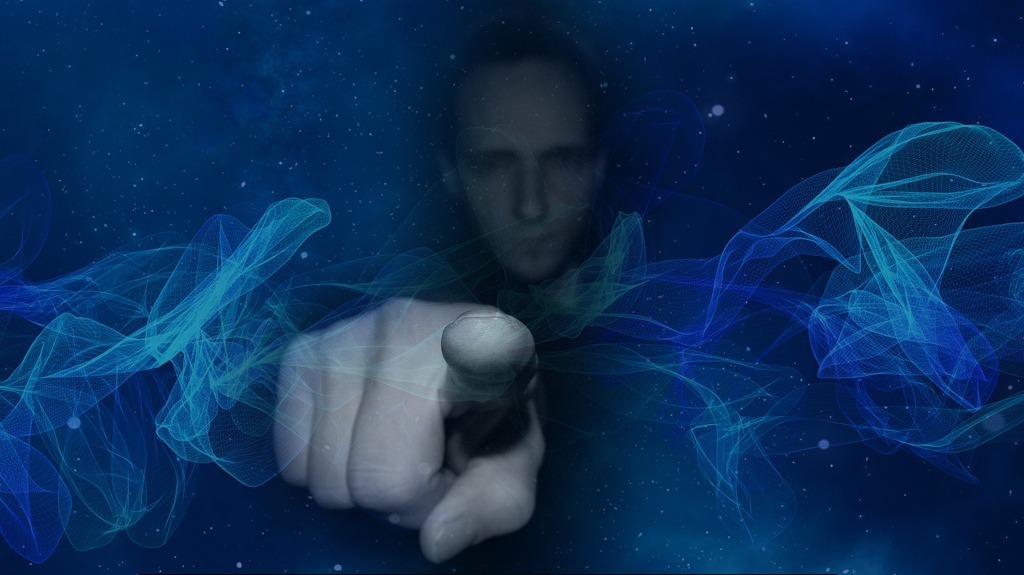Overview
Introduction to labels, terms & their effects
We all create an image of who we are, who we want to be, and who we absolutely do not want to be. This process starts in childhood, where we begin defining ourselves based on concepts that guide us: our achievements, setbacks, strengths, weaknesses, and feedback from others. Through reinforcement and correction, we learn which behaviors are desirable and which are “off-limits,” leading us to associate positive feelings with accepted behaviors and negative ones with those discouraged.
Over time, this process forms a mental picture, an identity—a self-image. This is a natural part of being human, and there’s nothing inherently wrong with it.
Constructivism acknowledges this aspect of human psychology.
But how aware are we of this in our everyday lives? Do we notice that our image of ourselves and the world is something constructed, rather than an objective reality? Are we conscious of the fact that our beliefs, judgments, and opinions represent only subjective snapshots of a broader reality? Often, we define both ourselves and others using labels and terms that fit the image we’ve constructed, reinforcing self-perceptions and our perceptions of others.
This habit can subtly undermine our ability to grow and change. This article invites you to reflect on this. It’s an opportunity to consider whether you’ll carry these restrictive labels forward or allow yourself—and others—to embrace change and move beyond resistance.
Labels & terms | the Rabbit hole of "narcissism" and "empathy"
When we can name things, we often feel secure. A category or term can make things understandable, giving the mind a sense of peace—a way to feel grounded. Terms can offer clarity. A label, such as a diagnosis of narcissistic personality disorder, might be helpful as a starting point for therapeutic understanding and personal reflection. It may help in understanding what we perceive in others or use it as a point for personal growth. Narcissism is a term increasingly used today. People are often called “narcissistic” or labeled as “the narcissist”, frequently without any formal diagnosis. This can lead to putting others in a box, a category that seems to bring stability amidst the chaos many experience after such encounters. Feelings of longing, pain, anger, fear, and insecurity are common. Naturally, grounding oneself in such situations is understandable.
It’s important to recognize and acknowledge all these feelings and allow them to exist. We can observe what these situations evoke within us: pain, longing, sadness, anger, and even powerlessness. By choosing to look within—this is not about blame or responsibility—we open a door to self-reflection. It’s an invitation to say, “I want to see, feel, and understand myself.”
Many people get stuck in accusation and victim mentality, feeling disconnected from themselves. Taking an honest look at how we connect with ourselves, how genuine, loving, and honest we are, is a path toward awareness. It’s about taking responsibility for our inner processes and choosing consciously how we want to respond to painful situations. Through this, growth can unfold, inner healing can happen, and chaos can begin to settle.
This journey requires courage, as it often involves questioning everything we believe about ourselves, life, and others. It’s about challenging our self-image, diving into fears we’ve long avoided, facing our inner shadows, and learning to accept the full spectrum of our inner world.
Many avoid this step—it’s daunting. People seek security, striving for a sense of order. This leads to categorizing others and even ourselves, believing that life becomes more manageable this way.
However, labels like empathy and narcissism are just descriptors. They are neutral tools to describe traits—nothing more. They’re not absolute. In science, statistics provide approximations, yet deviations always exist. Still, humans gravitate toward absolute thinking, seeking security. Recognizing this helps us understand ourselves better. I’ve been in similar relationships and know that, at times, it’s necessary to let go of blame temporarily, to simply breathe.
In this article, I aim to raise awareness of how the mind operates. It generalizes, categorizes, and tends to make absolutes of things. Identifying with labels can offer calm but may hinder long-term healing and growth if we cling to them too rigidly.
Naming vs. blaming | Use of concepts
In the empathic-narcissistic or narcissistic/co-narcissistic constellation, there is a polarization. This model presents two sides.
I have detailed this in the article series Empathic-Narcissistic Magnetism – 8 Common Basic Conflicts. This model describes various facets and tendencies, but it is not absolute. From a psychoanalytic perspective, particularly in the collusion model according to Jürg Willi , there is no clear division of good and evil. It is a neutral framework for description.
Narcissism is a term used to describe micro-processes that reflects our emotional tint. The meaning we add to them and how we
subjectively color these experiences depend on our history with the individual who triggered these micro-processes. Our levels of
suffering, disappointment, and injury shape our judgment , which in turn has an energetic effect on both ourselves and others. This influences the weight and meaning of the terms narcissism and empathy. We seldom judge objectively in such intense situations. We are free to assert, “That’s enough!” and often, that is what matters most. Setting boundaries and saying, “Not like this!” is perfectly acceptable & healthy!
However, relationships can become painful when individuals perceive themselves as highly empathetic. Their empathy may prevent them from recognizing their own dignity.
At this point, you may see how this self-image can entrap us in these dynamics. We often fear being distanced from our self-image (“I must be there for others first”). Yet, such relationships might challenge us to expand the parts of ourselves that long for visibility.
Visibility and “being seen.” We often recognize qualities in others that we refuse to acknowledge in ourselves, due to an inner pressure for matching a certain image. These internal prohibitions and taboos prolong our suffering.
While being loving, empathetic, and sensitive is part of who I am, there may be much more to my inner universe, I can´t see clearly right now. Defining oneself strictly as an empathetic person may lead to the exclusion of other aspects of the very true being. It´s a limitation, a cage – restricting the full expression of self to a pre-defined framework. That applies to both – the own self and the people we´re relating to.
When faced with a narcissistic, egocentric , and distant partner, this reflects a part of them. But there´s much more to explore!
Ultimately, all these definitions reflect our search for stability , a sense of security, and clarity. Yet, we rarely grasp the full picture. This is a lesson humanity must learn.
We cannot know what truly stirs within another person, nor can we feel their past experiences. Nevertheless, we often impose harsh judgments that strip others of their humanity.
We allow ourselves to be indignant. The Swiss-Polish author and psychologist Alice Miller discusses this in her book The Drama of the Gifted Child. She explicitly encourages us to “be angry.” When we are devalued, disregarded, or manipulated, feeling anger is part of a healing process. It allows us to acknowledge our vulnerability and commitment to our dignity.
This process opens doors that may have been once locked – for survival.
We can recognize self-centered, manipulative intentions in ourselves and others and gain clarity about them.
Clarity and visibility create the space necessary for healing.
In this german video, I take a clear stand. You may use auto-translated subtitles to get an idea about my truth. You can also have a look at the details about my Coaching for toxic relationships.
Detach yourself from this energy and concepts and move on. Step by step from resistance to acceptance (this does not mean “liking” or an agreement to stay).
Sometimes all it takes is: “Yes, there are people who are like that.”
It is your energy, your life force that adheres to negativity. This energy investment leads to a struggle that prevents you from confronting your own shadow issues and growing. Some people choose this ongoing struggle to avoid change or taking a clear, internal decision. Often it´s simply more convenient to cling to a concept and labels. Us humans are afraid of change. But maybe we should ask ourselves why we keep ending up in similar situations?
We can only evolve by developing a strategy for dealing with manipulative behavior. We may name them, but we do not have to engage in a fight with them (that´s the entrance door!). Any accusation or a conceptual battle binds your energy.
Identifying the micro processes and finding a clear, authentic attitude is sufficient. The inner relationship needs to be clarified and maintained. This requires a commitment to oneself (“I stand by myself!”).
And it´s always a training. You need to learn how to speak your truth unwaveringly in the face of such irritations. In dignity and self-respect. This sometimes means leaving situations where your dignity cannot be preserved.
Pathway to healing | Ending the fight of Labels & terms
Never ever would I ignore or deny suffering or pain. Neither would I ask someone in pain to excuse or protect the person who harmed them. I just would love to invite those people who are or have been in such a relationship to end one thing: An ongoing battle of blaming because of labels. Enter the path to healing! You can start your journey by following those 10 steps:
1. Always remember that the other is a human being, a universe with many different facets.
2. Embrace the deep truth that you that applies to you as well: You are a unique human being with an own, internal universe, which may – in all its unseen aspects – feel uncertain at times.
3. Understand that all feelings—pain, suffering, sorrow, anger, longing—are valid! Allow them to invite you to turn inward.
4. Recognize when these feelings signal a need for change. Pay attention to circumstances that require active alteration to alleviate suffering.
5. Embark on a journey with a courageous heart – towards a new honesty, openness, and acceptance of your humanity, embracing all your strengths and weaknesses.
6. Acknowledge your needs without placing the responsibility for their fulfillment on others.
7. Cultivate a healthy awareness of the differences between the processes of others and your own.
8. Set boundaries for all things and people that violate your dignity
9. Determine your limits when your own behavior might compromise your dignity. Draw boundaries to your own behavior as well – develop healthy discipline!
10. Decide to release the fight of labels and invest your energy in your journey within—toward your individuality.
We need terms; that’s a given. However, the real issue lies in our identification with these terms (or in labeling). This can cause fights about their meanings. This dynamic is reflected in the current situation we face now in the world. Such labels have a dividing, almost splitting effect. As a collective, we’ve been presented with such lessons multiple times. We allowed it several times, that discrimation (no matter which one) divided us. Discrimination means “judging differences”. We may be different. And there´s nothing bad about it. But do we need labels and judgments to widen the gap? To put a sentence on someone? Or can we still recognize the value and humanity in each other? Each being has a beating heart, even if they may be different. Share different feelings and fears.
Releasing yourself from these labels & terms primarily benefits you. It also benefits others. If you retain the ability to see the humanity in others while maintaining your own clarity and boundaries, you contribute to a deeper healing that connects us all.
Allow yourself and others to escape the cage of restrictions created by terms & labels. They outline tendencies we may see in ourselves or others. Remember, You are not responsible for others. Acknowledge that you will never fully understand everything. Accepting this can lead to peace. Us humans often resist open questions. Yet, we’ll never fully comprehend everything. At best, we see some facets which shape our subjective reality.
Perhaps you can begin to consider that there’s so much more about yourself and your fellow human beings that you have yet to discover. This realization might help you finally let go of what bound you until now. That includes concepts, identities, and contracts you’ve made with yourself about how to conform to your self-image. You truly want to carry that into the life you desire?
Clinging to those labels & terms, you are perpetuating an inner drama cycle characterized by good and evil, victim and perpetrator, even if this is not reflected in your external reality anymore. Do you want this to continue influencing your life? You can initiate a transition: moving from the confined mental cage of rigid concepts & drama into a space of adventurous curiosity about what life beyond these definitions may offer.
I invite you to gift yourself with lightness: Let go of labels & terms.







